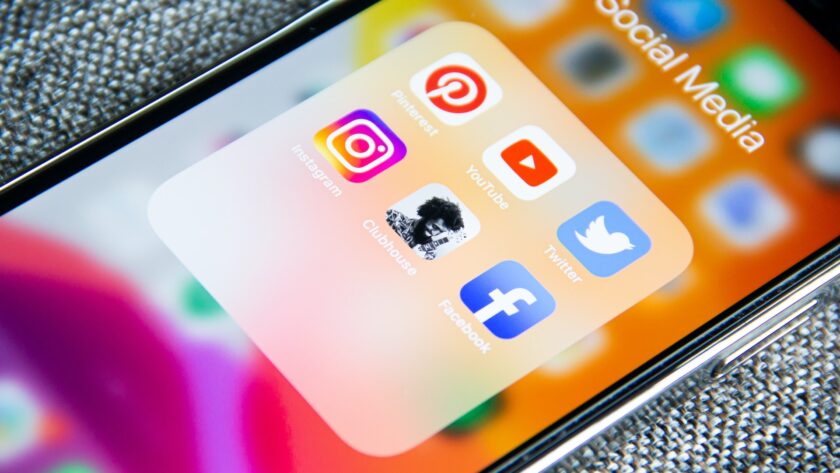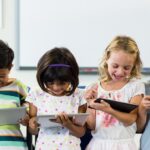Social media has now changed the way we interact, learn, and communicate with each other, becoming a crucial component of our daily lives in this digital age. With technology and the internet, social media has become an essential tool for educational institutions to reach out to students and create a better learning environment. Many educators and researchers have recognized the potential of social media in education, and it is increasingly being used as a tool to enhance teaching and learning.
Social media’s rise has revolutionized how educational institutions interact with students, teachers, and parents. With the help of social media platforms, educational institutions can connect with students, share important information, and engage with their community. Social media is becoming an effective tool for educational institutions to promote their services, programs, and events to a broader audience.
1. Interactive and collaborative learning environment
Social media can provide an interactive and collaborative learning environment for students. Platforms like Twitter, Facebook, and Instagram allow students to connect with their teachers, facilitating discussions and knowledge-sharing beyond the traditional classroom setting. Social media can also help break down communication barriers between students and teachers, making it easier to engage with each other and establish a more personal connection.
2. Create engaging and interactive content
Another significant advantage of social media is that it provides educational institutions with a platform to create engaging and interactive content. Social media platforms like YouTube and TikTok have become popular among educational institutions as they can create short educational videos and tutorials that students can access anytime, anywhere. This type of content is engaging and interactive, making it an effective tool for learning.
3. Research and Learning
Social media is also used as a tool for research and learning. With access to a wealth of information on social media platforms, students can use these platforms to research topics and gain new insights. Social media also provides a platform for experts in various fields to share their knowledge and expertise, allowing students to learn from them directly.
4. Develop important digital literacy skills
Social media can help students develop important digital literacy skills. In today’s digital age, being able to navigate social media and other digital platforms is crucial. By using social media for educational purposes, students can learn how to use these platforms responsibly and effectively. They can also develop skills like critical thinking and digital communication, which are essential for success in today’s world.
5. Student engagement and motivation
Social media is also used to promote student engagement and motivation. By using social media in the classroom, teachers can create a more engaging and interactive learning environment. Social media can be used to gamify learning, making it more fun and motivating for students. Teachers can also use social media to share updates and resources with their students, keeping them informed and engaged throughout the course.
6. Connect and share information
Social media has become the most powerful tool for students to connect and share information. Students can create study groups on social media platforms, which allows them to collaborate, share notes, and ask questions. This type of collaboration can improve the learning experience for students and help them achieve better grades.
7. Showcase their achievements and success stories:
Social media has also provided educational institutions with an opportunity to showcase their achievements and success stories. Educational institutions can share the success stories of their students, faculty, and staff on social media platforms, which can improve their reputation and attract more students. This type of positive publicity can be beneficial for educational institutions, especially for those that are struggling to attract students.
8. Bridge the gap between formal & informal learning
Social media can help bridge the gap between formal and informal learning. Students today are often active on social media platforms outside of school, and by incorporating these platforms into the classroom, teachers can create a seamless learning experience.
The use of social media in the educational system has been growing in recent years, with educators using platforms such as Twitter, Facebook, and Instagram to engage with students, share information, and promote their programs. Platforms like Twitter and Instagram allow educators to connect with students in real-time, answering their queries and clarifying doubts. This level of accessibility can help students feel more connected to their educators and create a more collaborative learning environment.
In educational institutions, students are now meeting with each other in virtual form. With the increasing use of social media and advanced features incorporated into them, it is quite easy to keep in contact and have a chat from the comfort of your home. After the COVID-19 pandemic, the increase in online meet-ups is much more evident, and people are now comfortable with their social media friends only.
Conclusion
Social media has become a very integral part of our lives. From sharing our daily experiences to connecting with our loved ones, social media platforms have become a ubiquitous presence in our daily routines. While social media was primarily created to help people connect, its role has expanded in recent years, with many educational institutions and educators leveraging these platforms to enhance the learning experience for students.
Through the use of social media platforms, educators can engage with students outside of the traditional classroom setting, and students can collaborate with their peers and access educational resources more easily. Additionally, team outings can also be organized through social media to help build a sense of community and foster teamwork among students.




